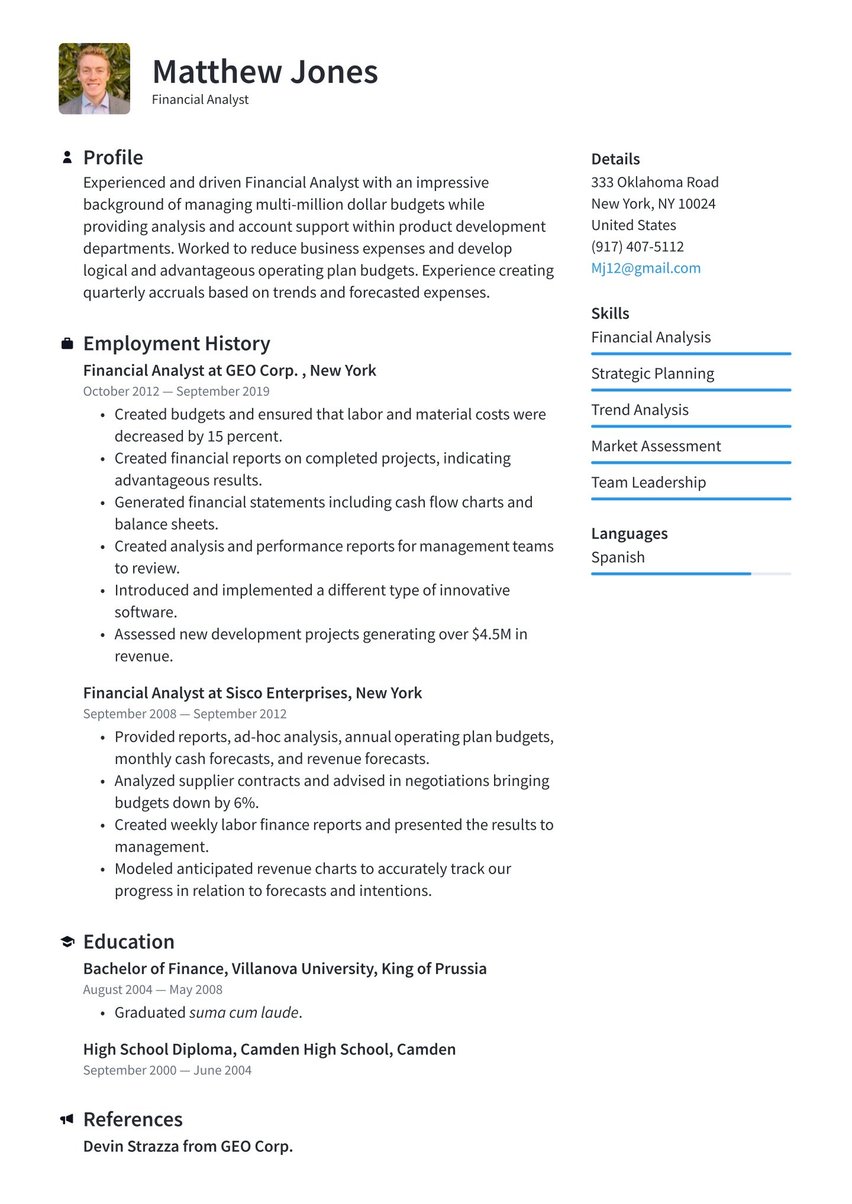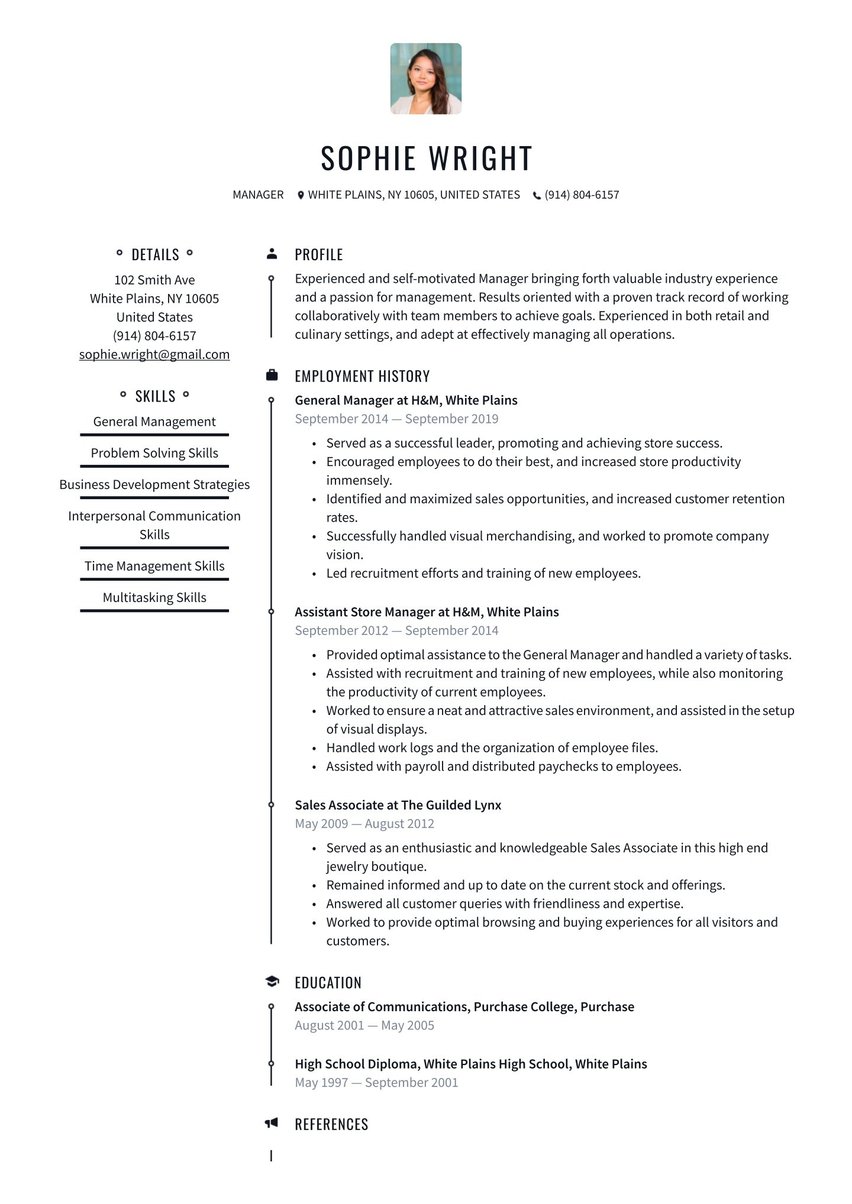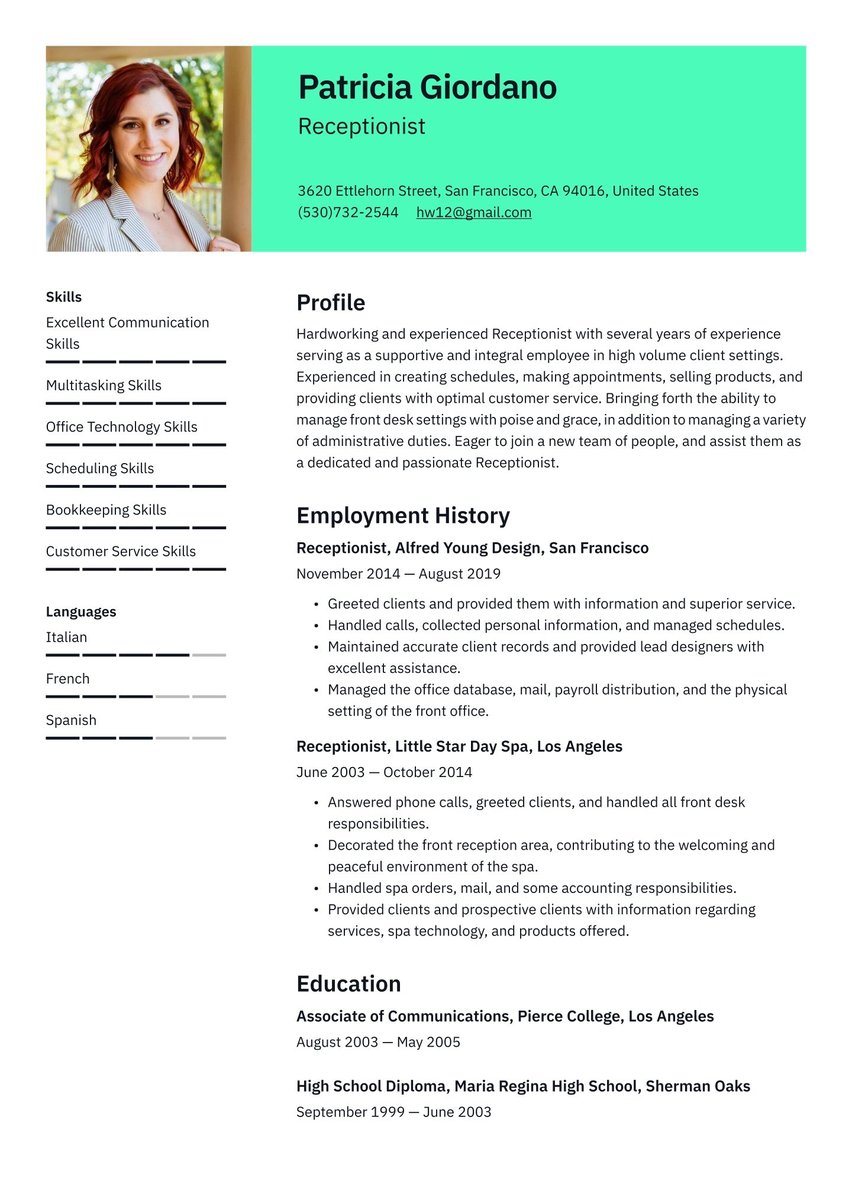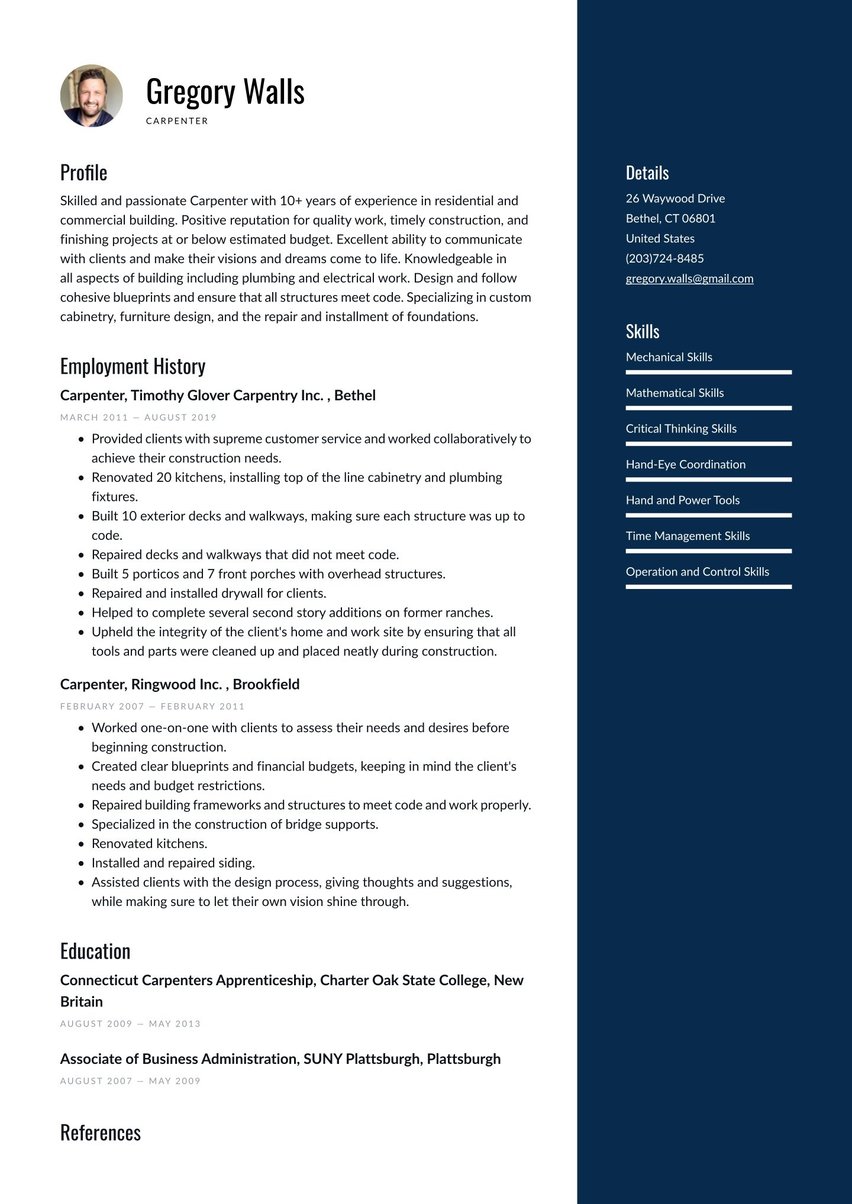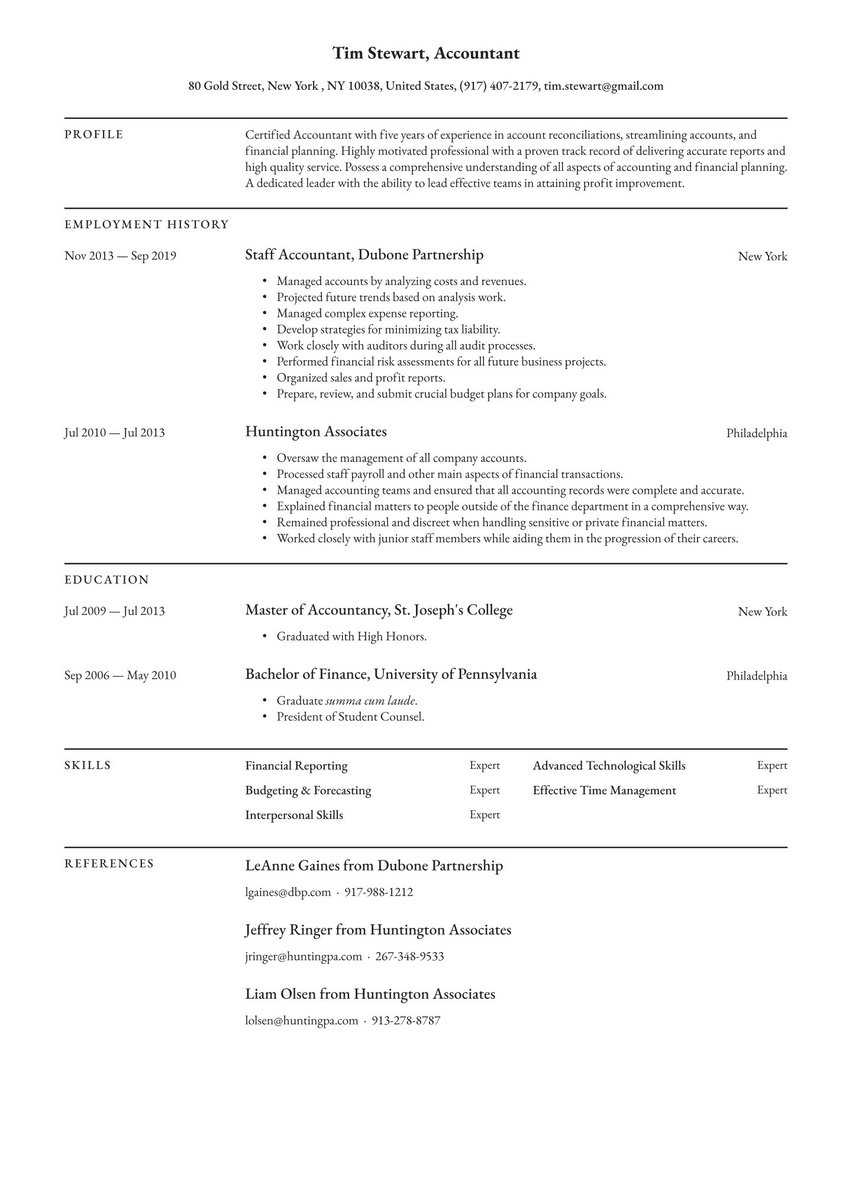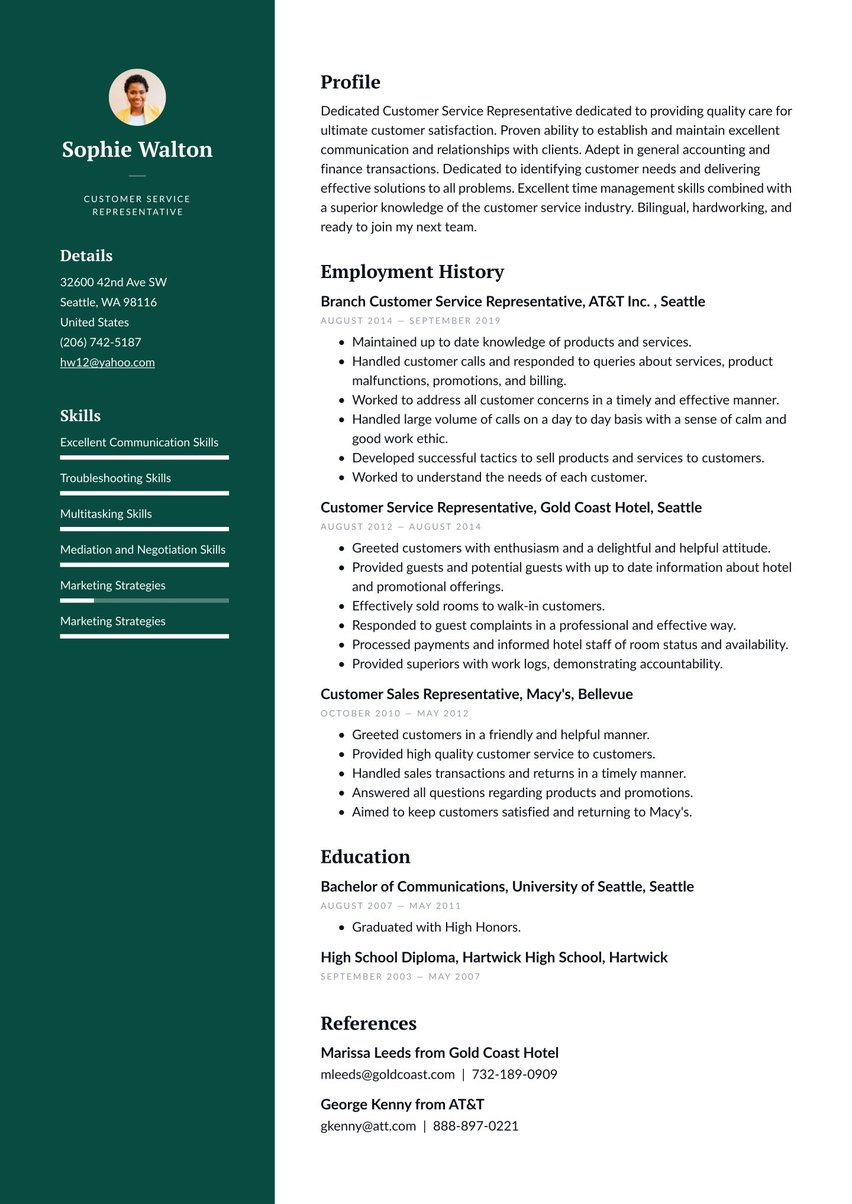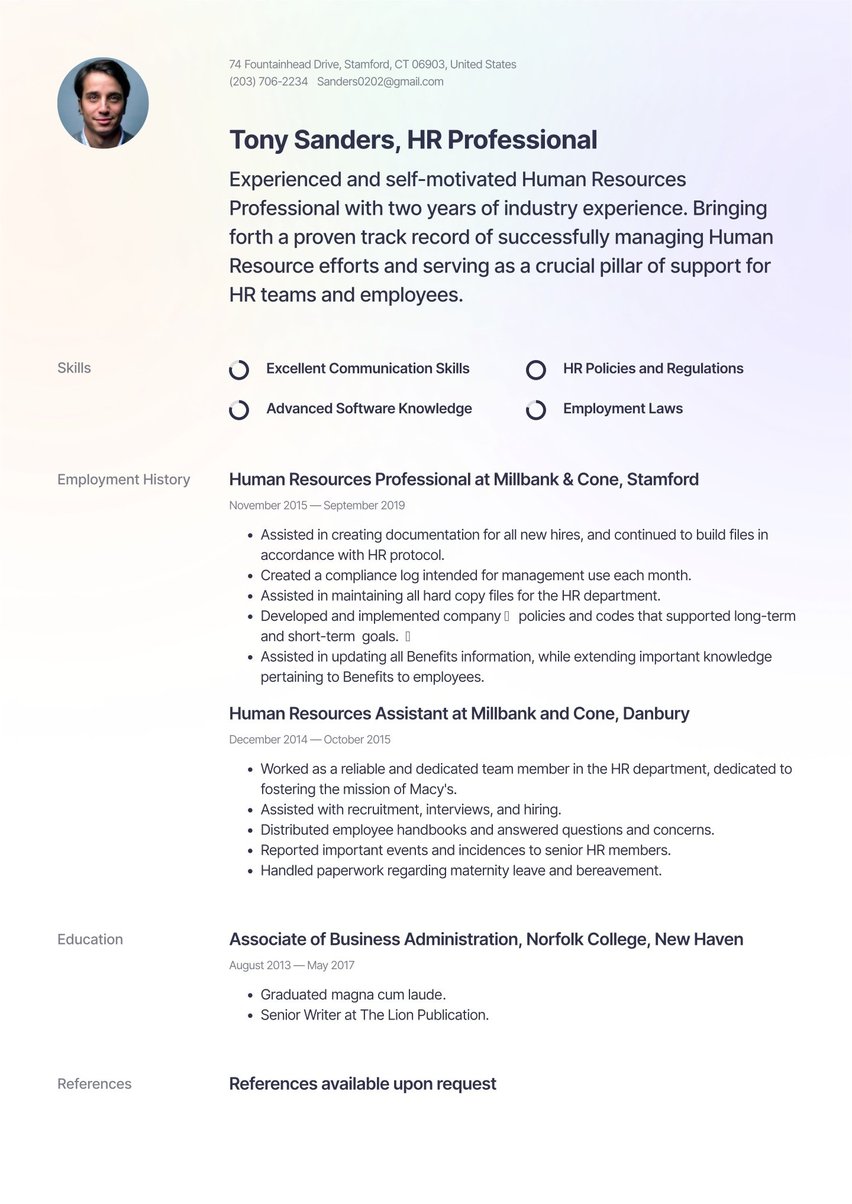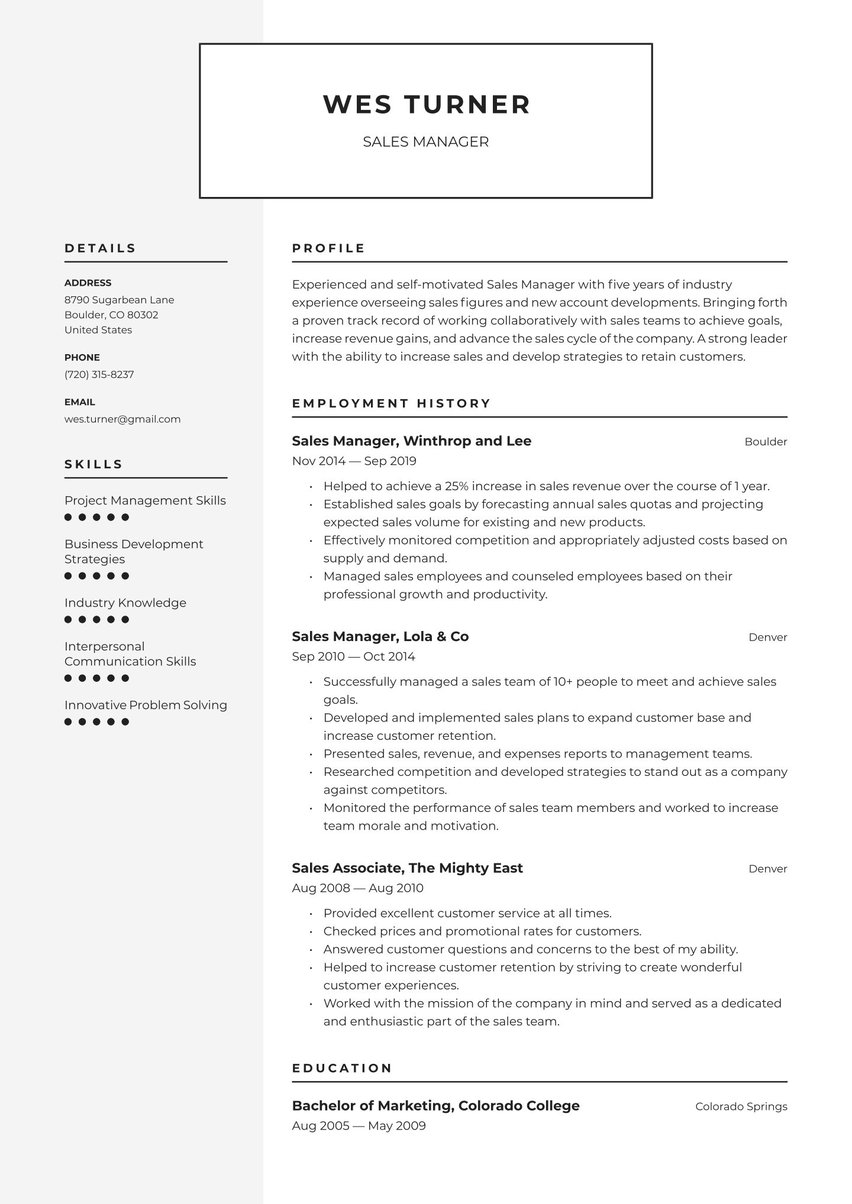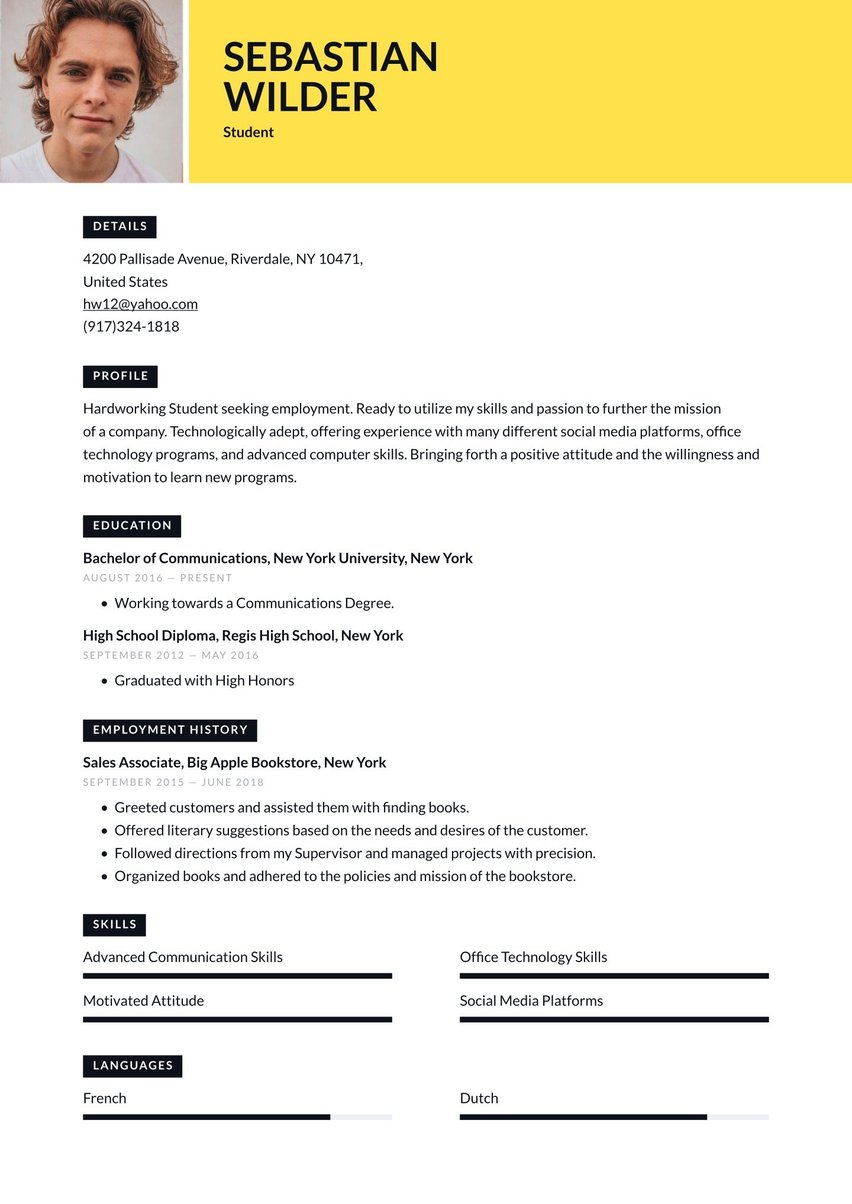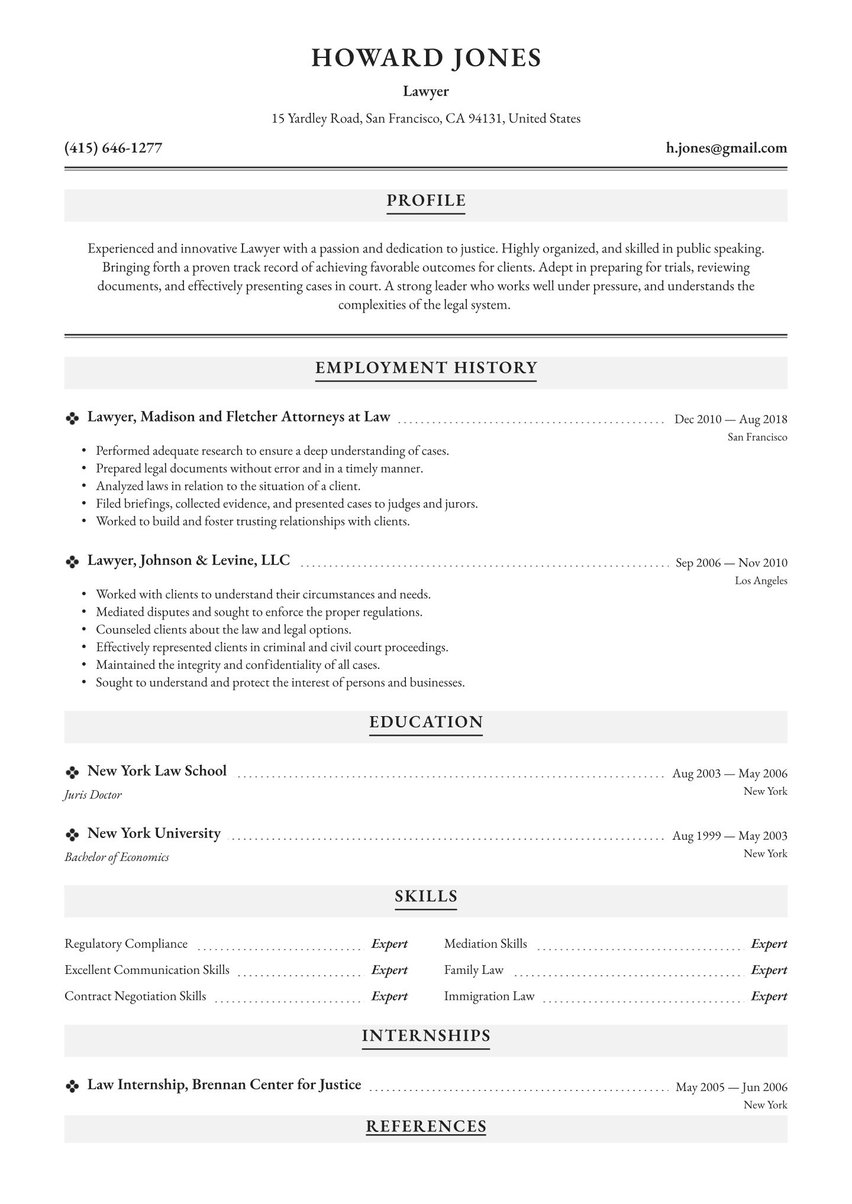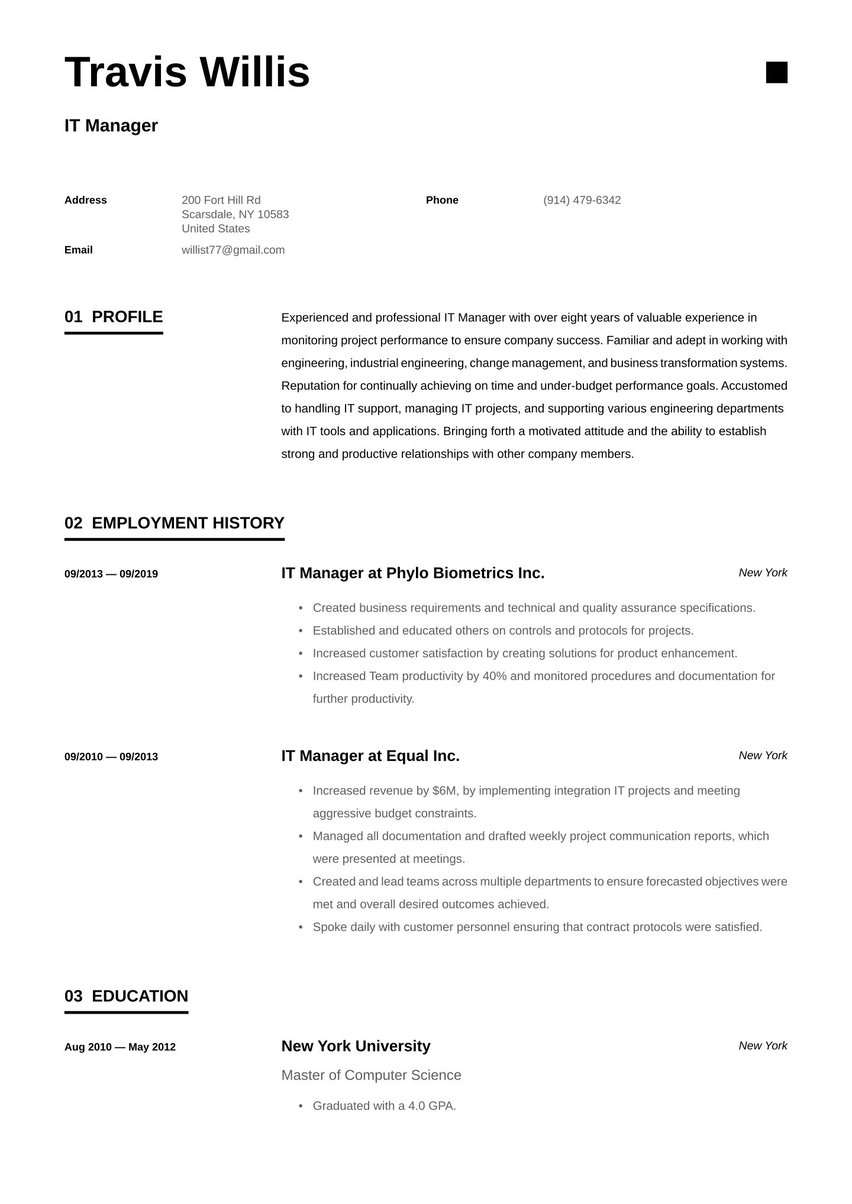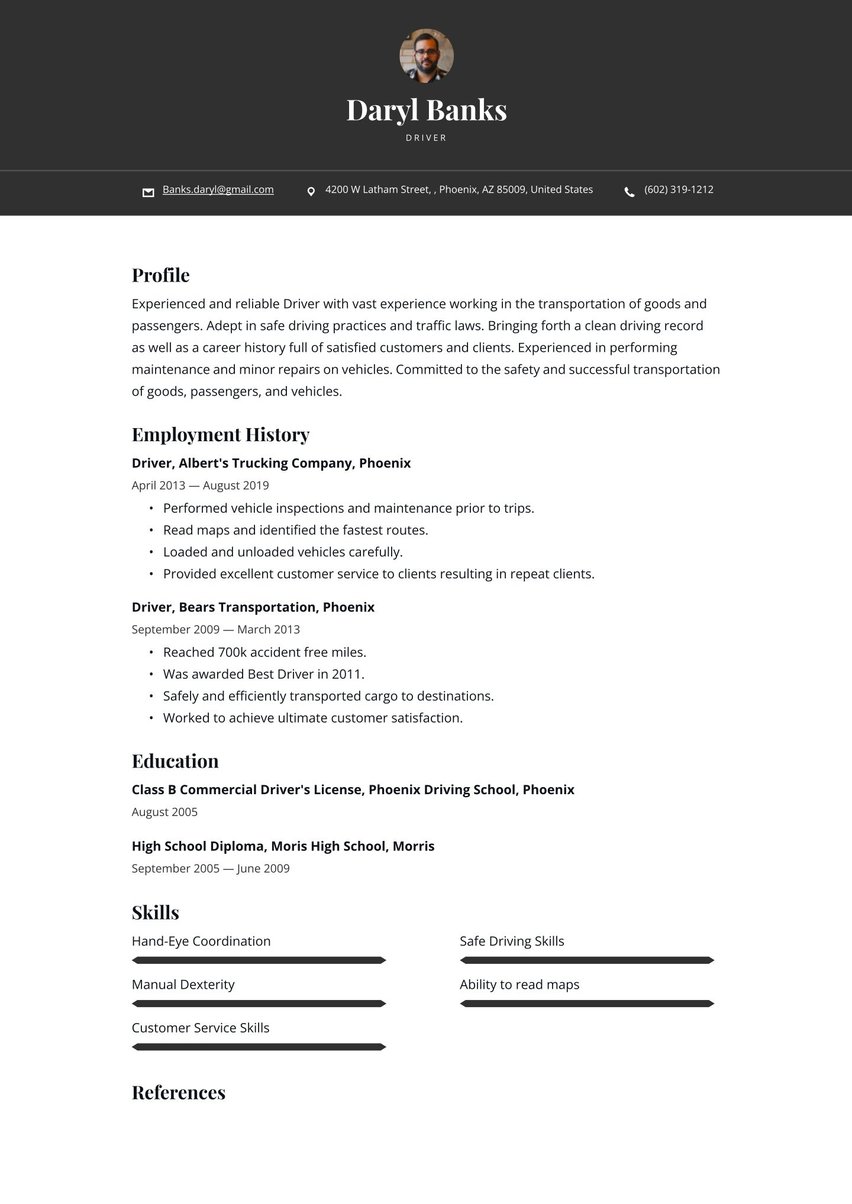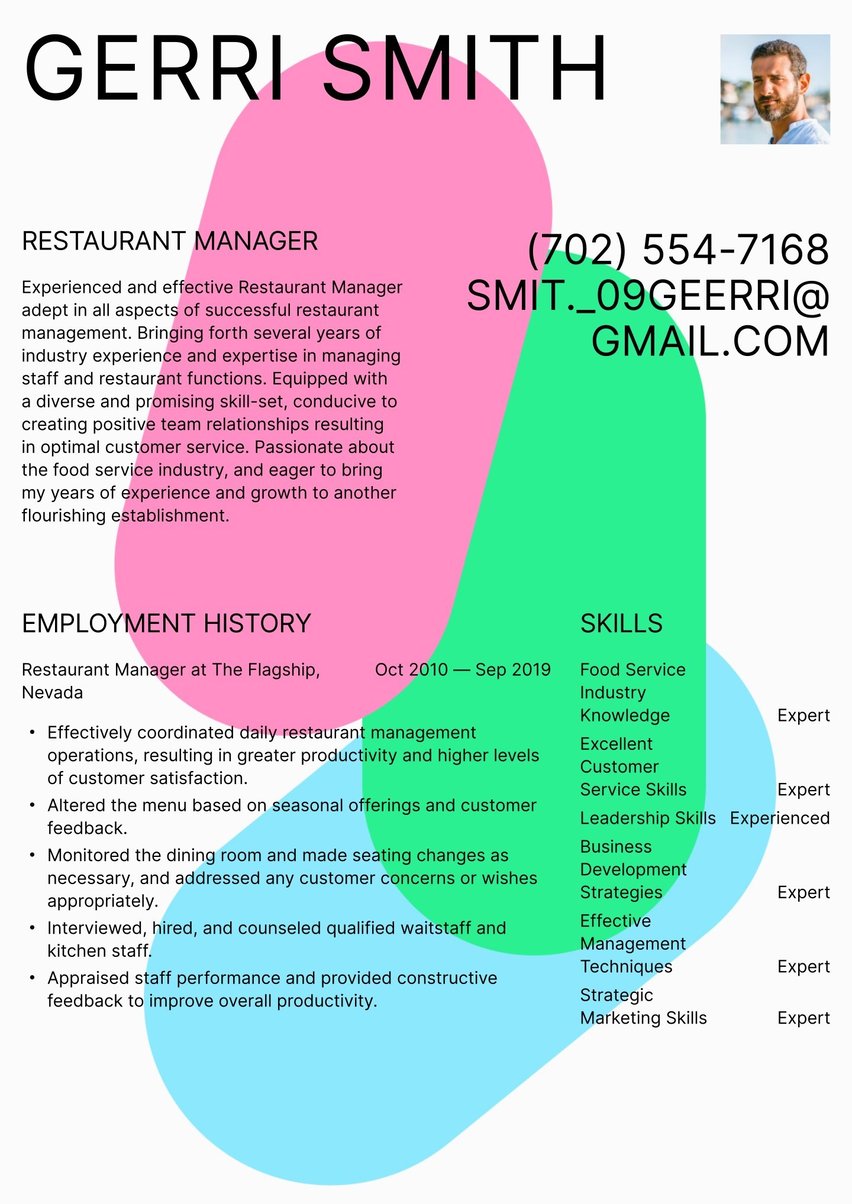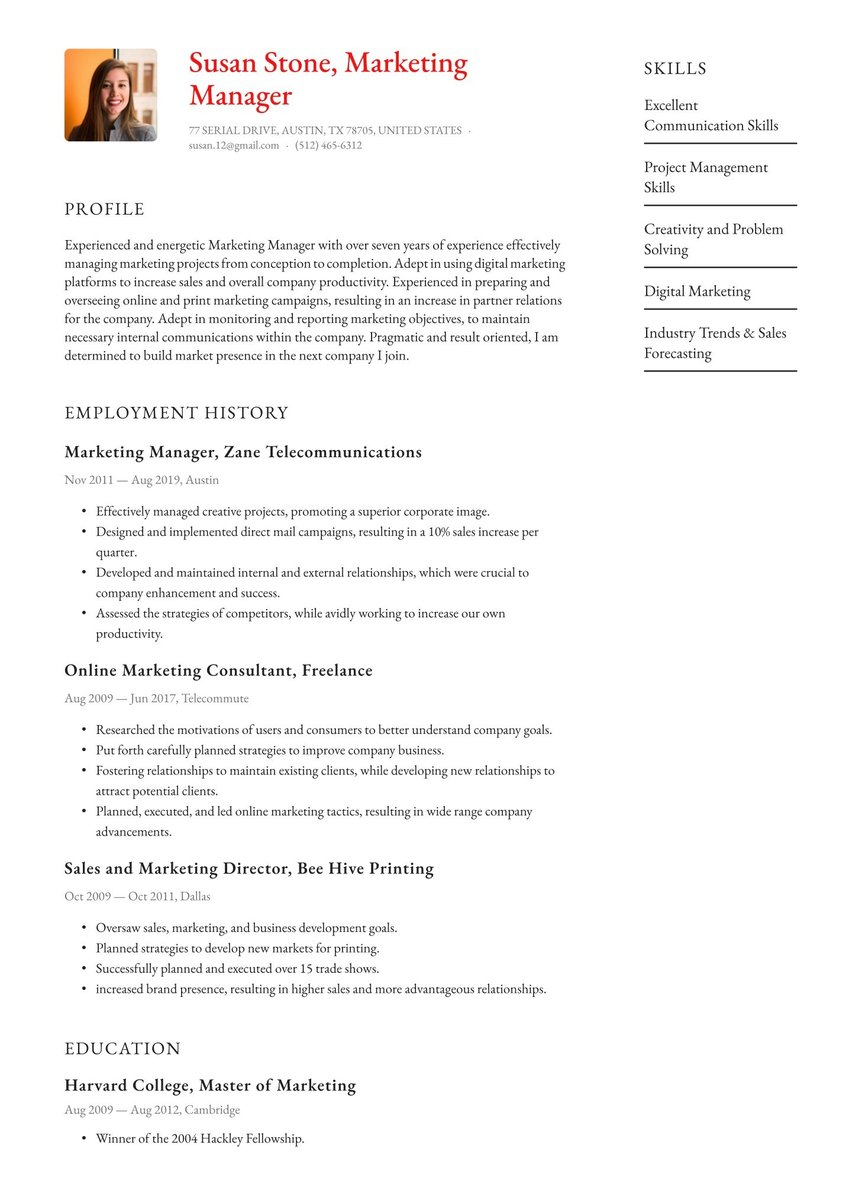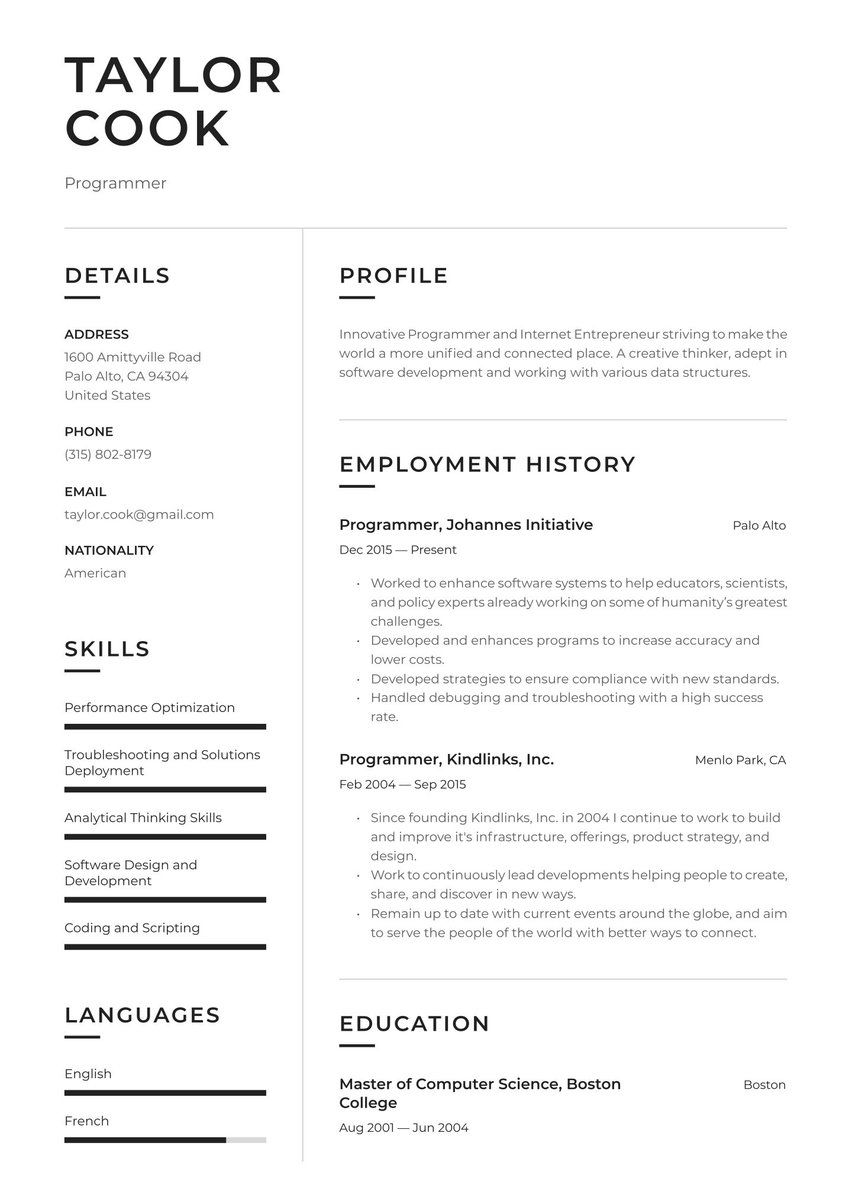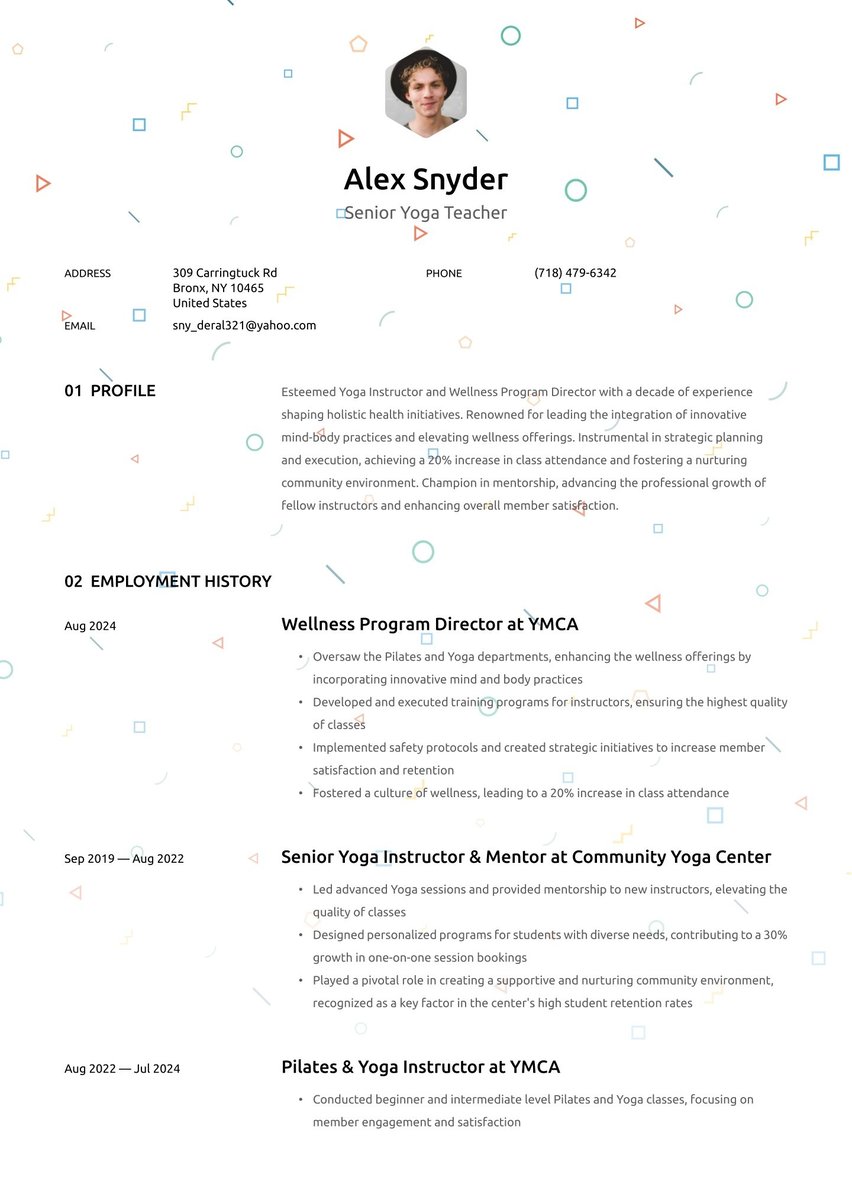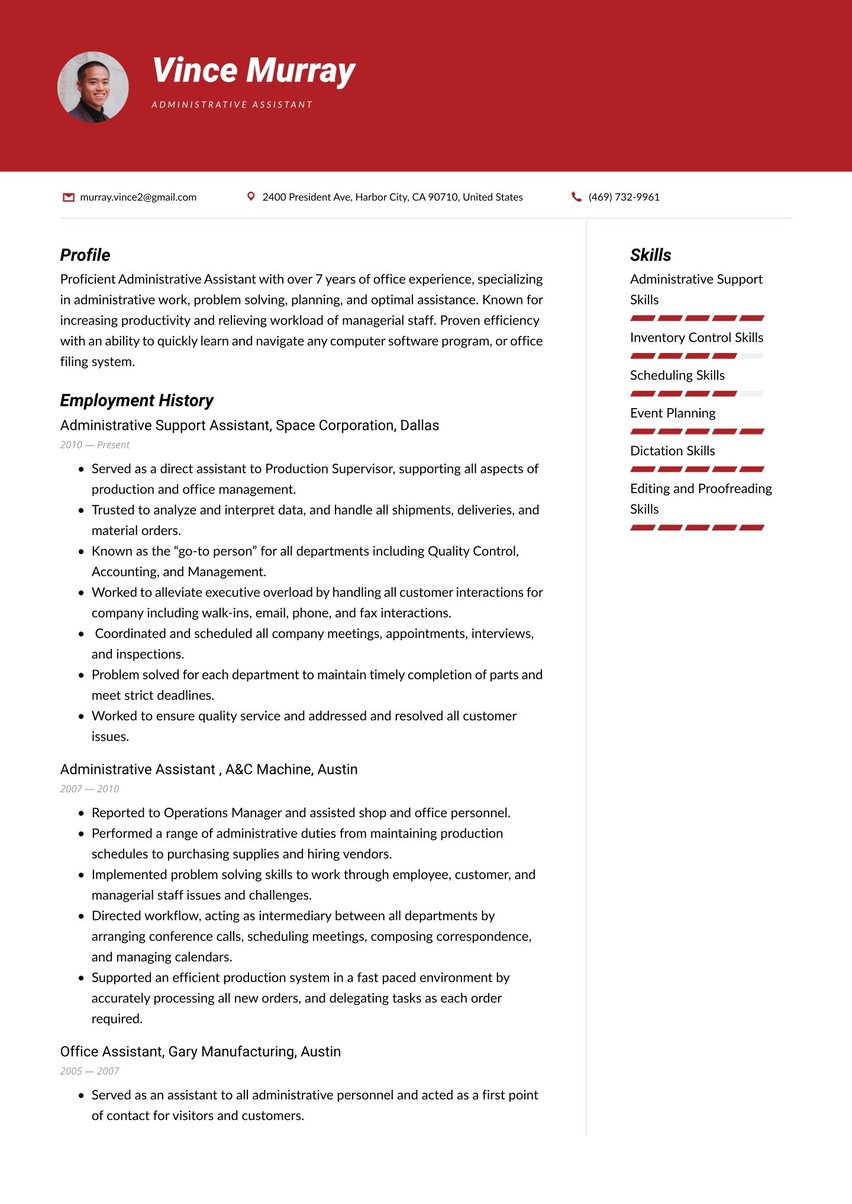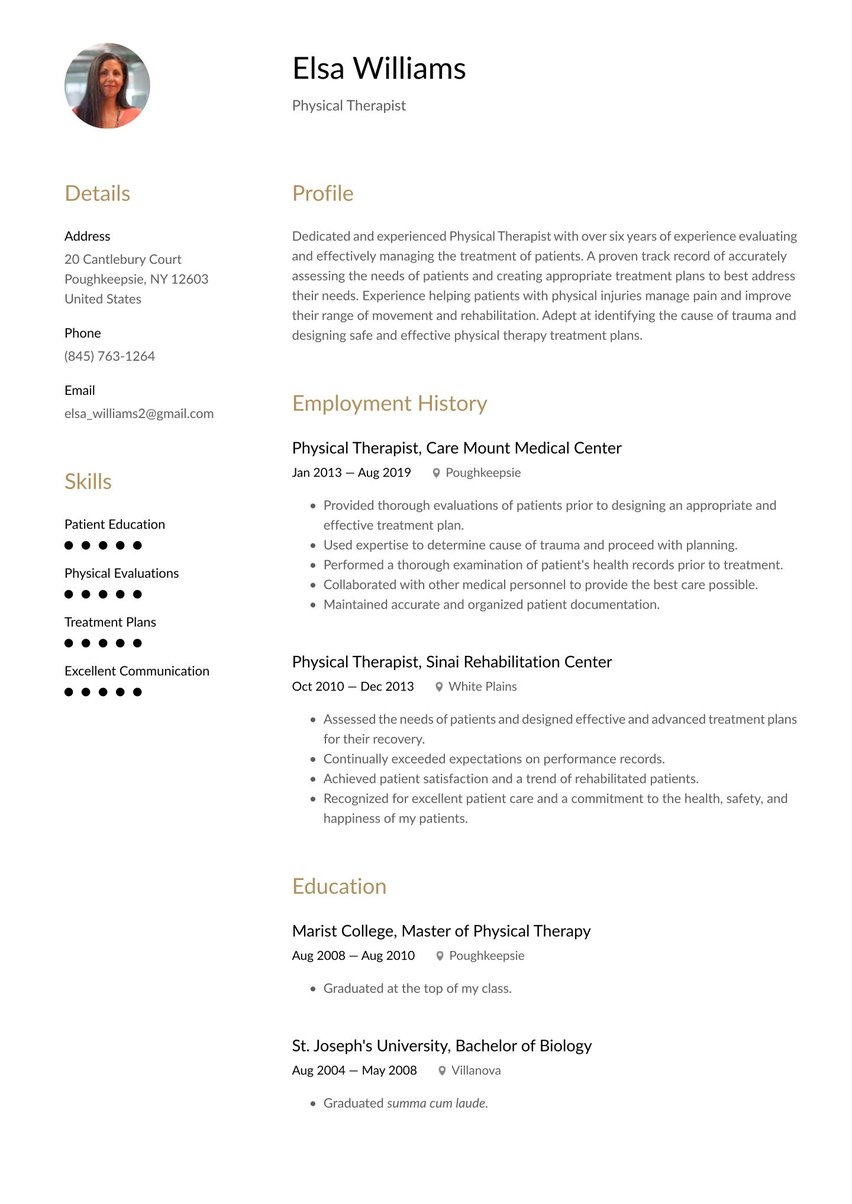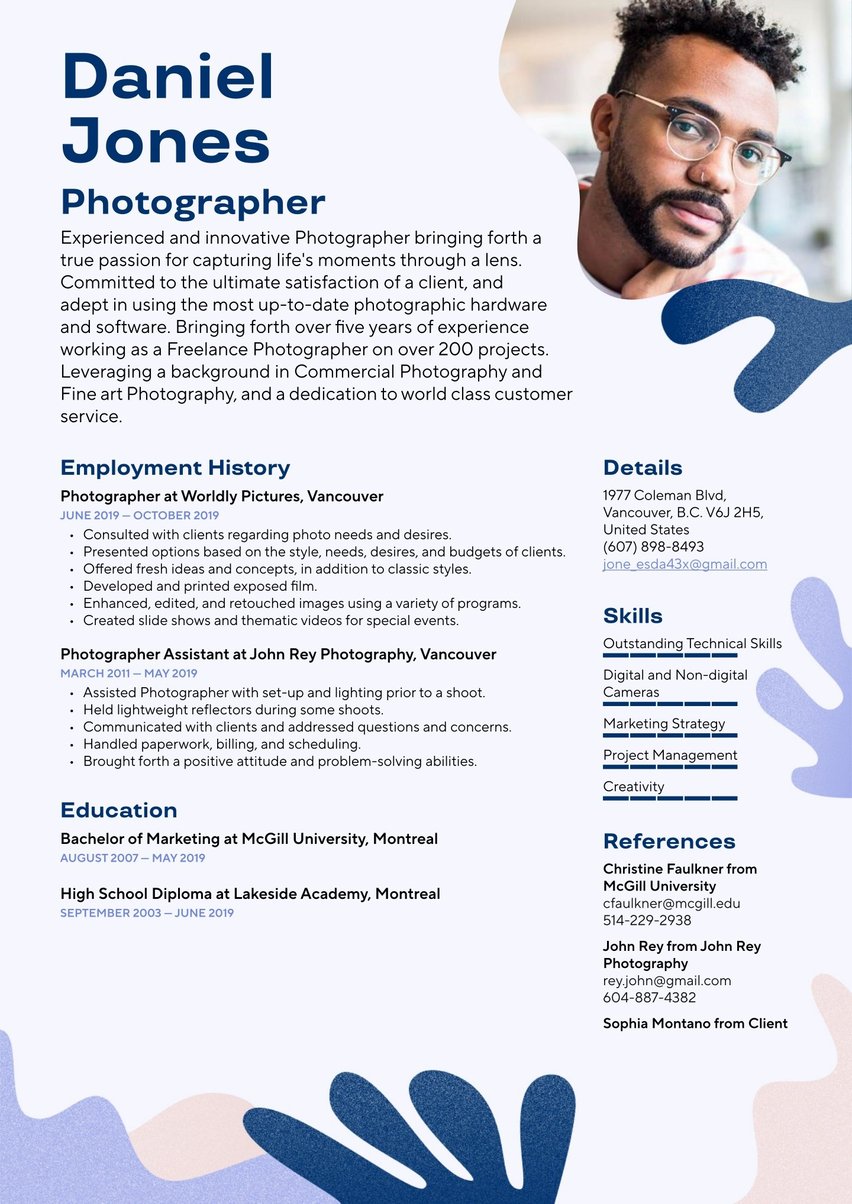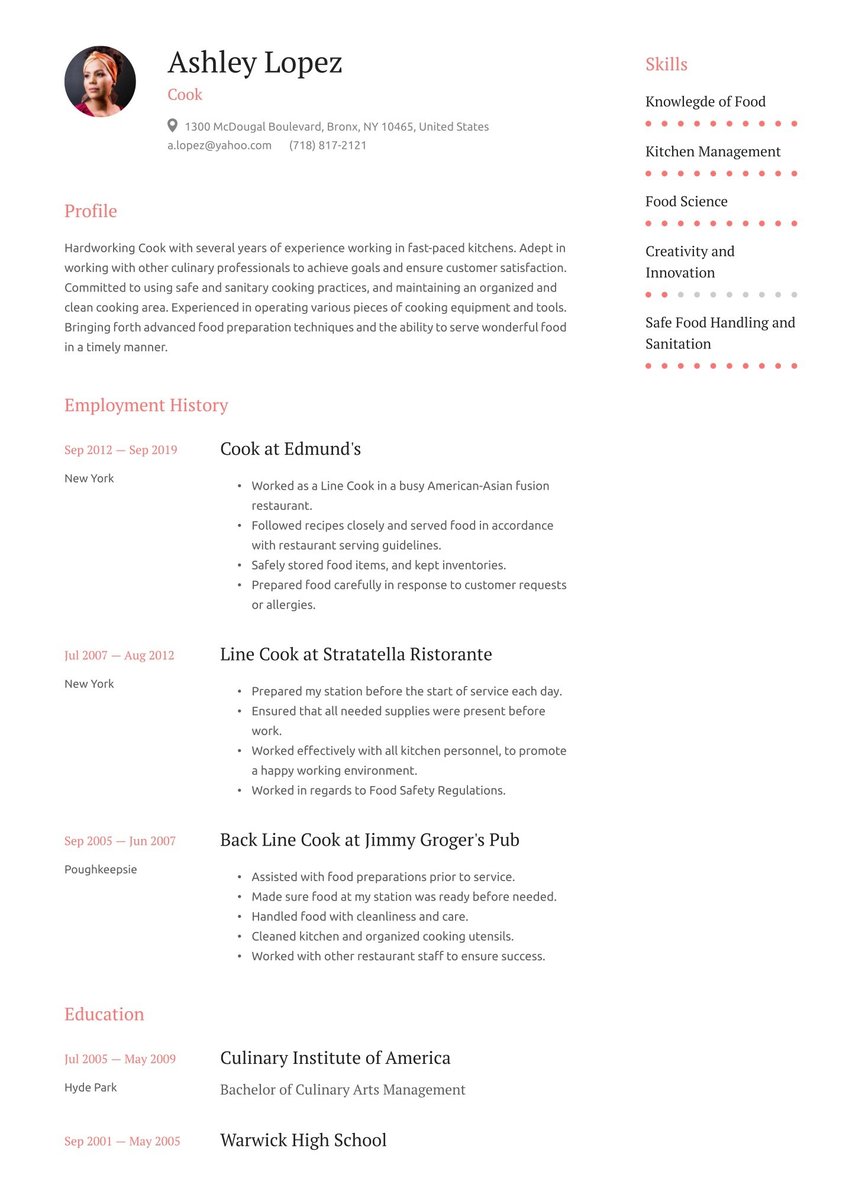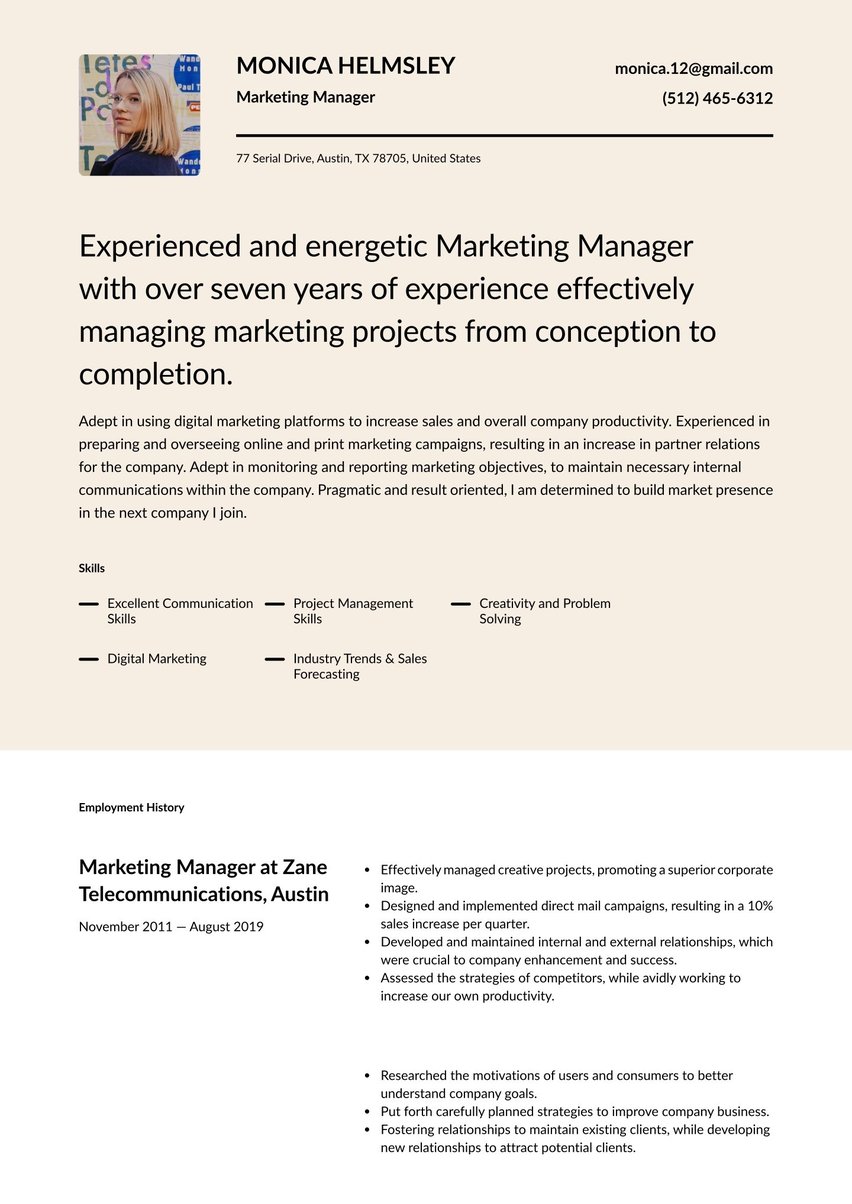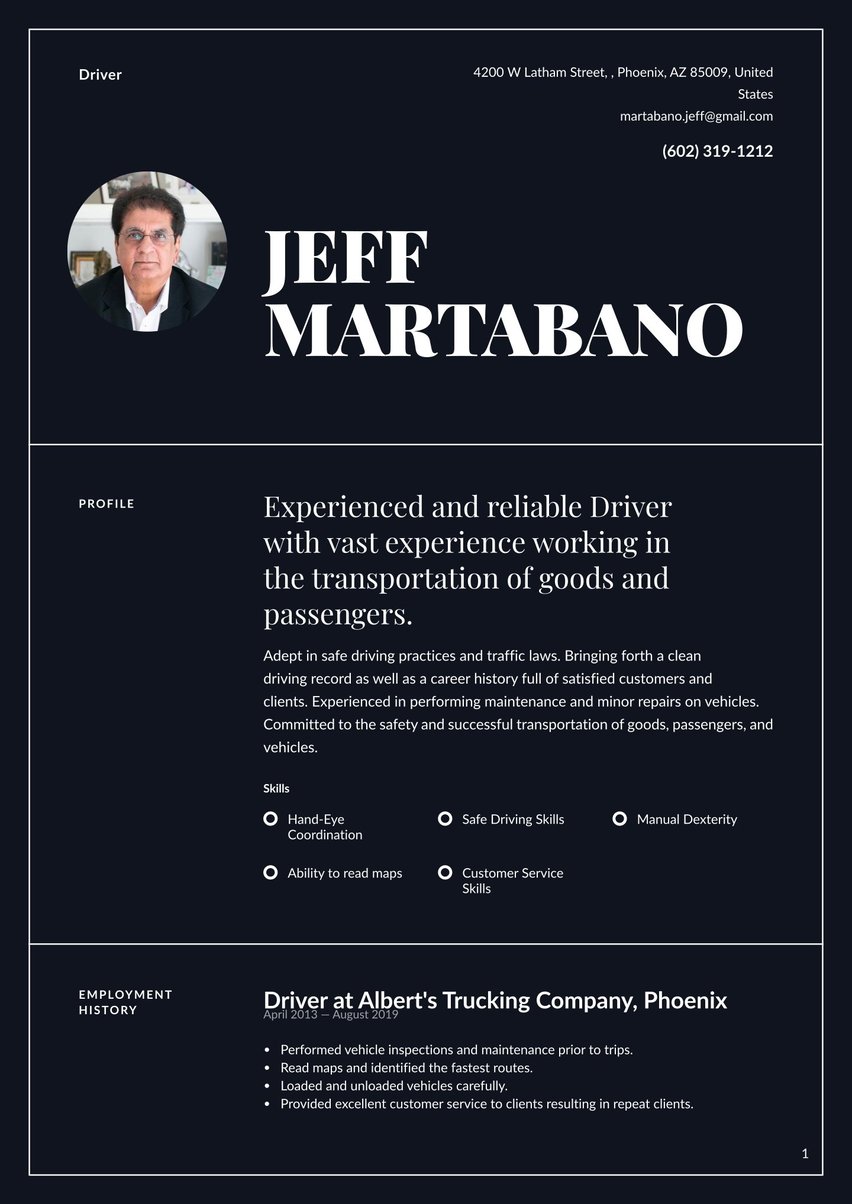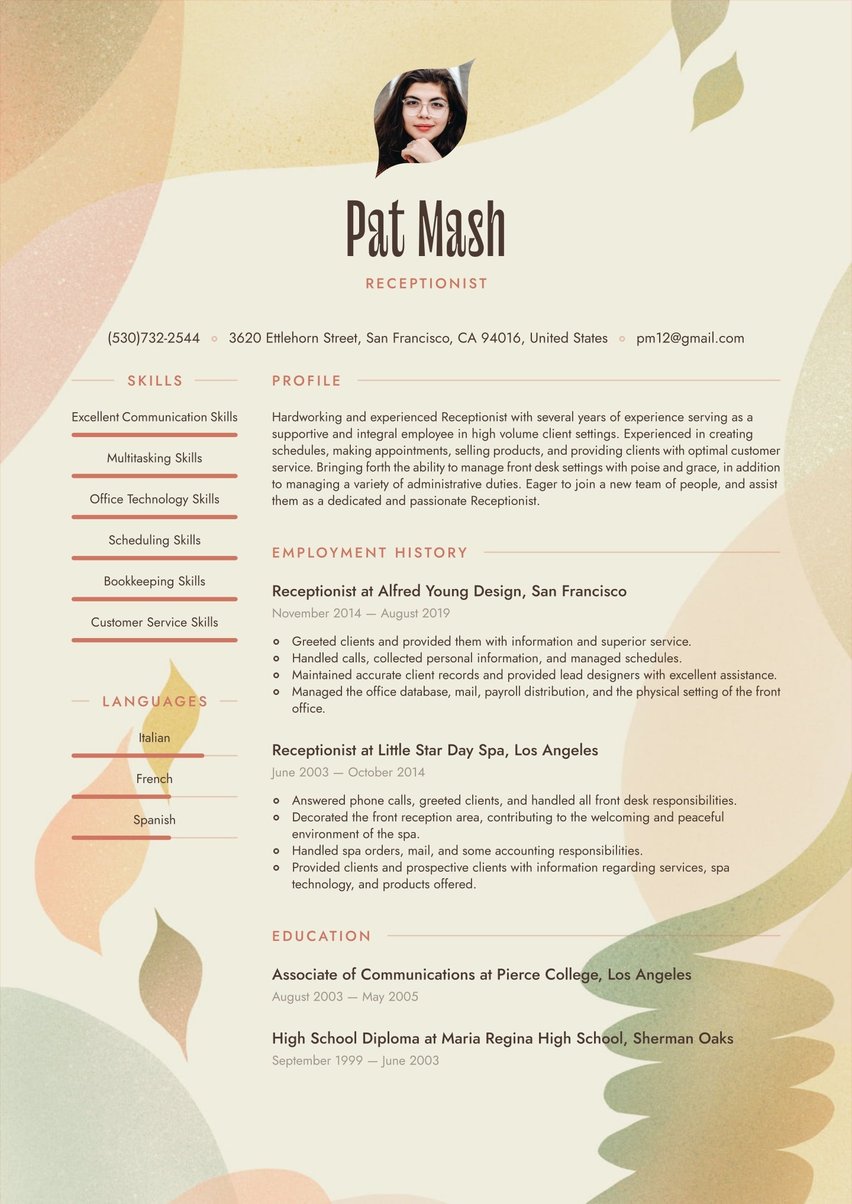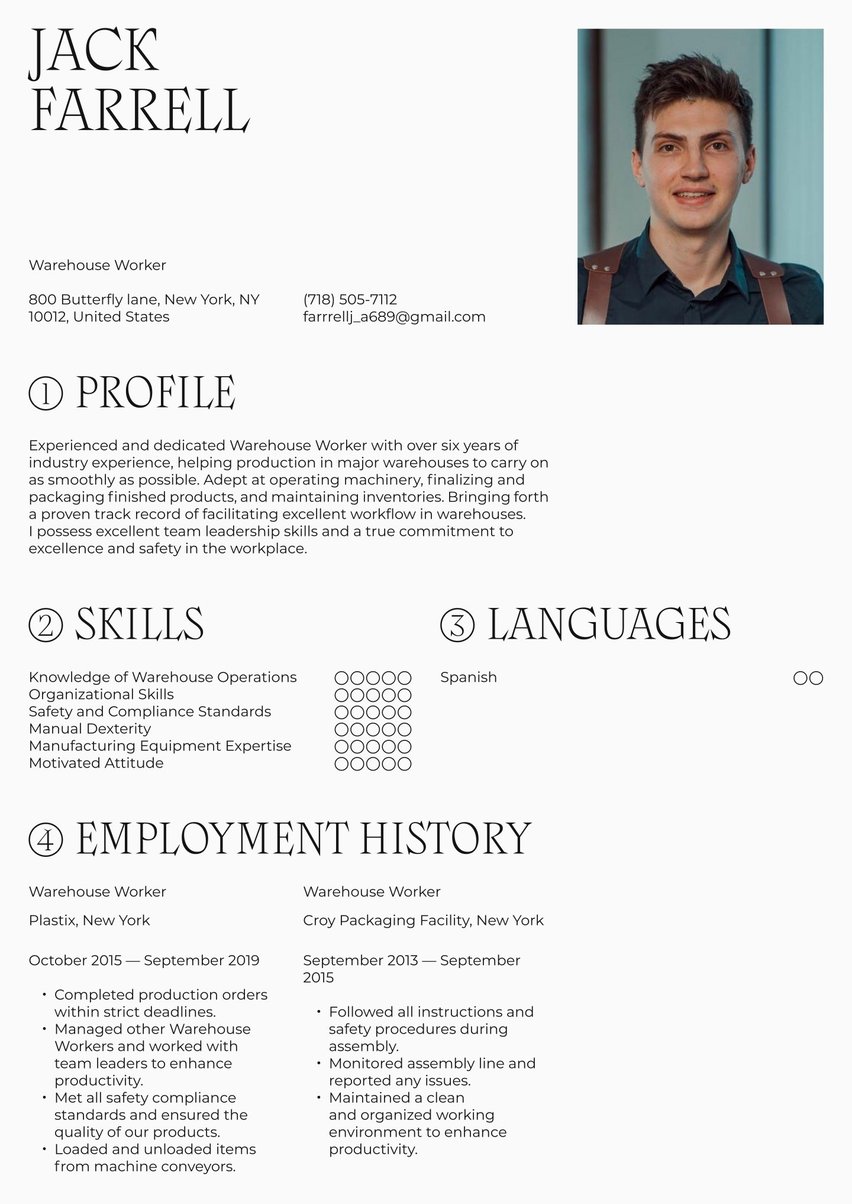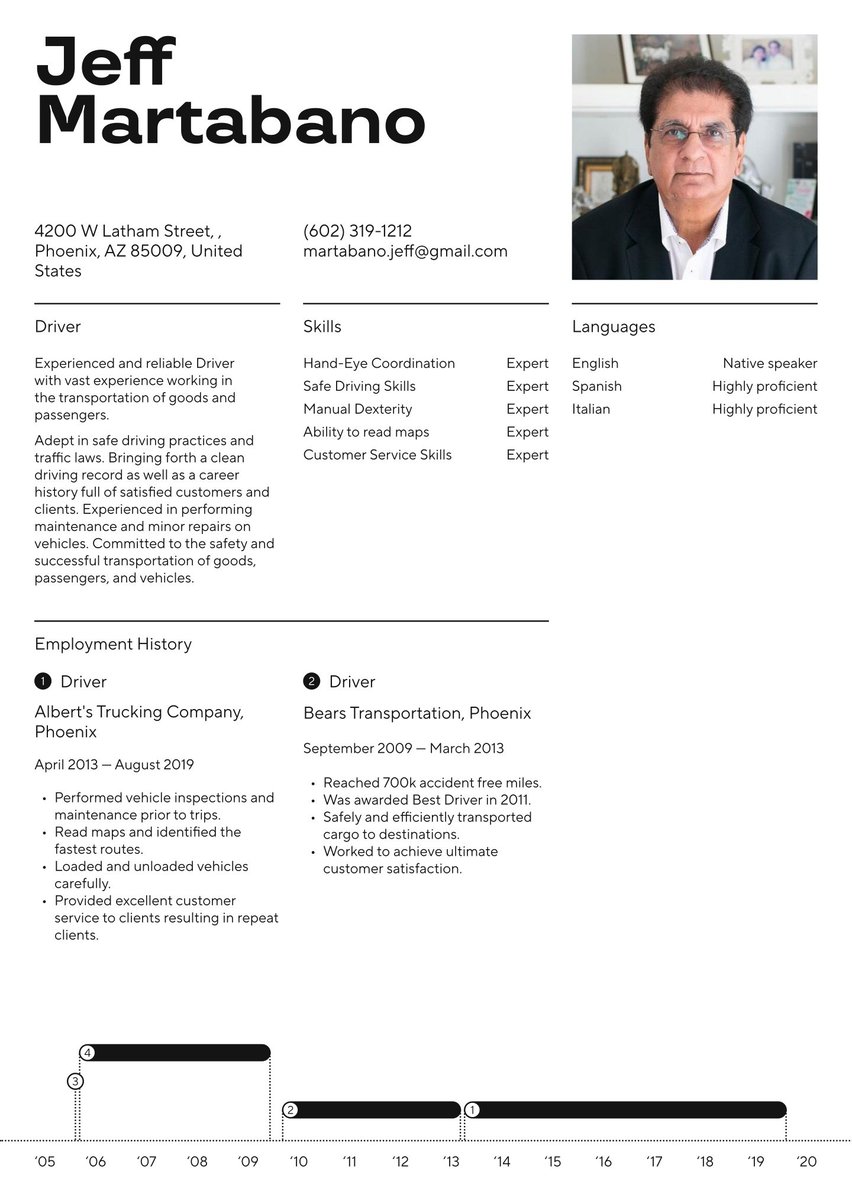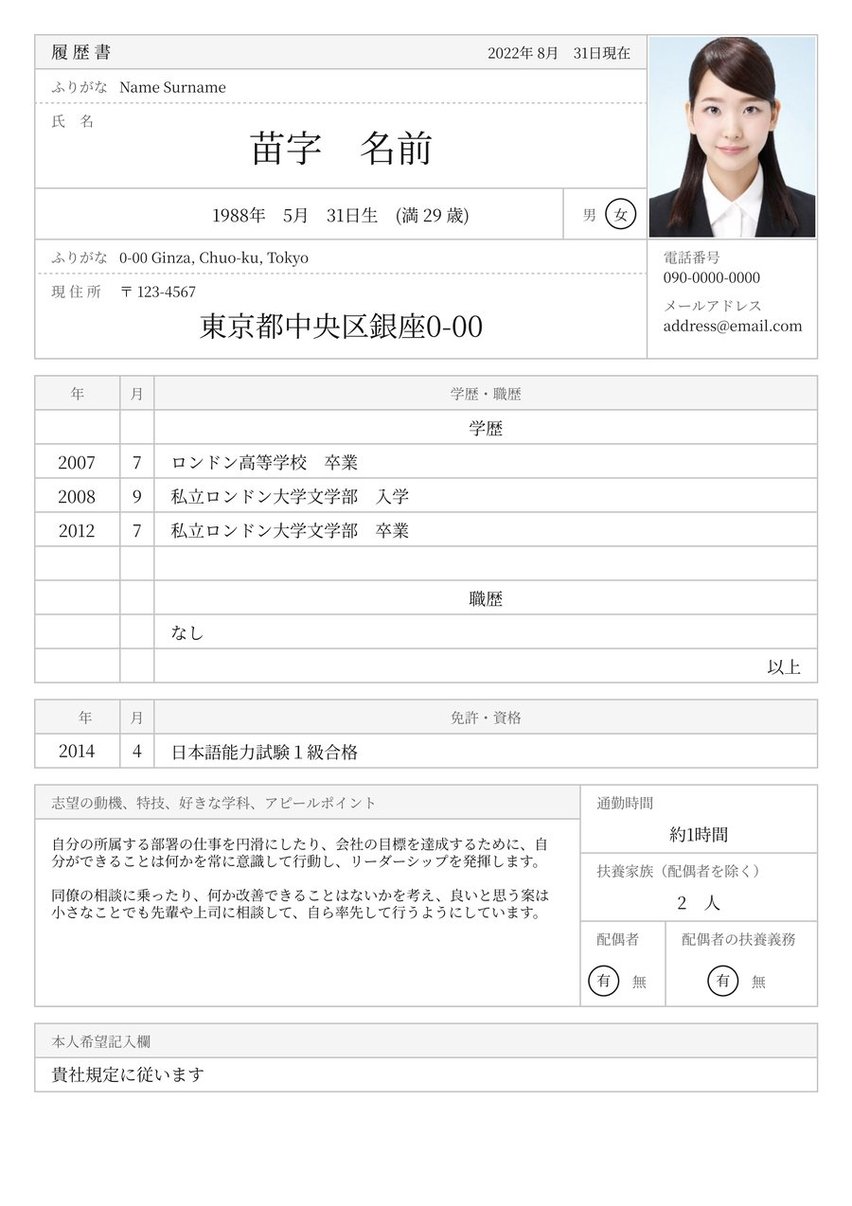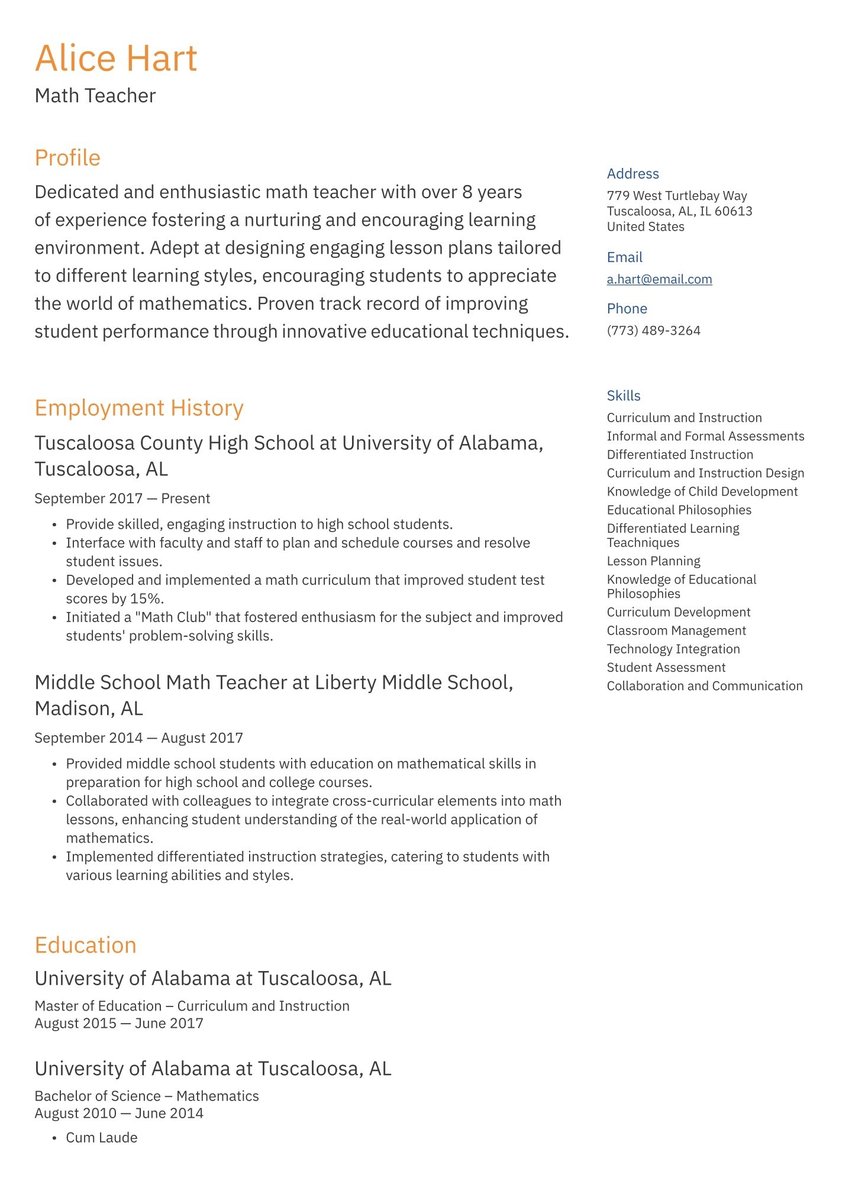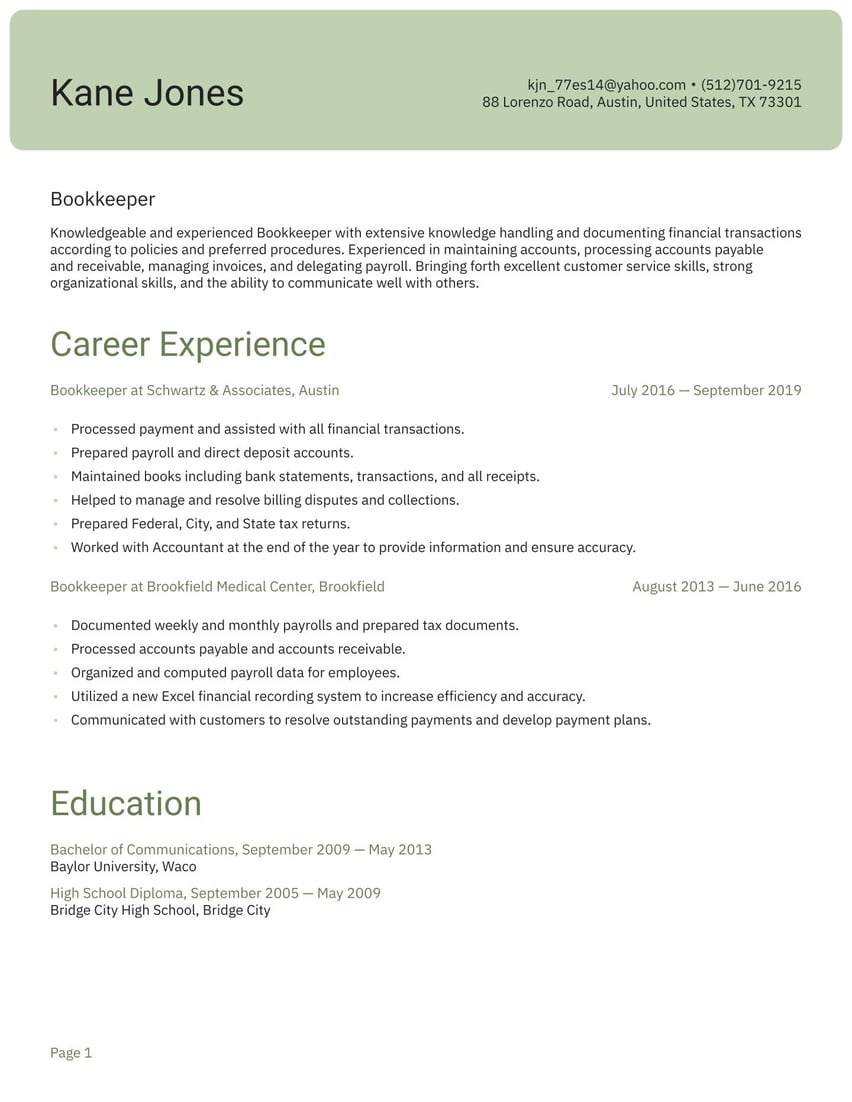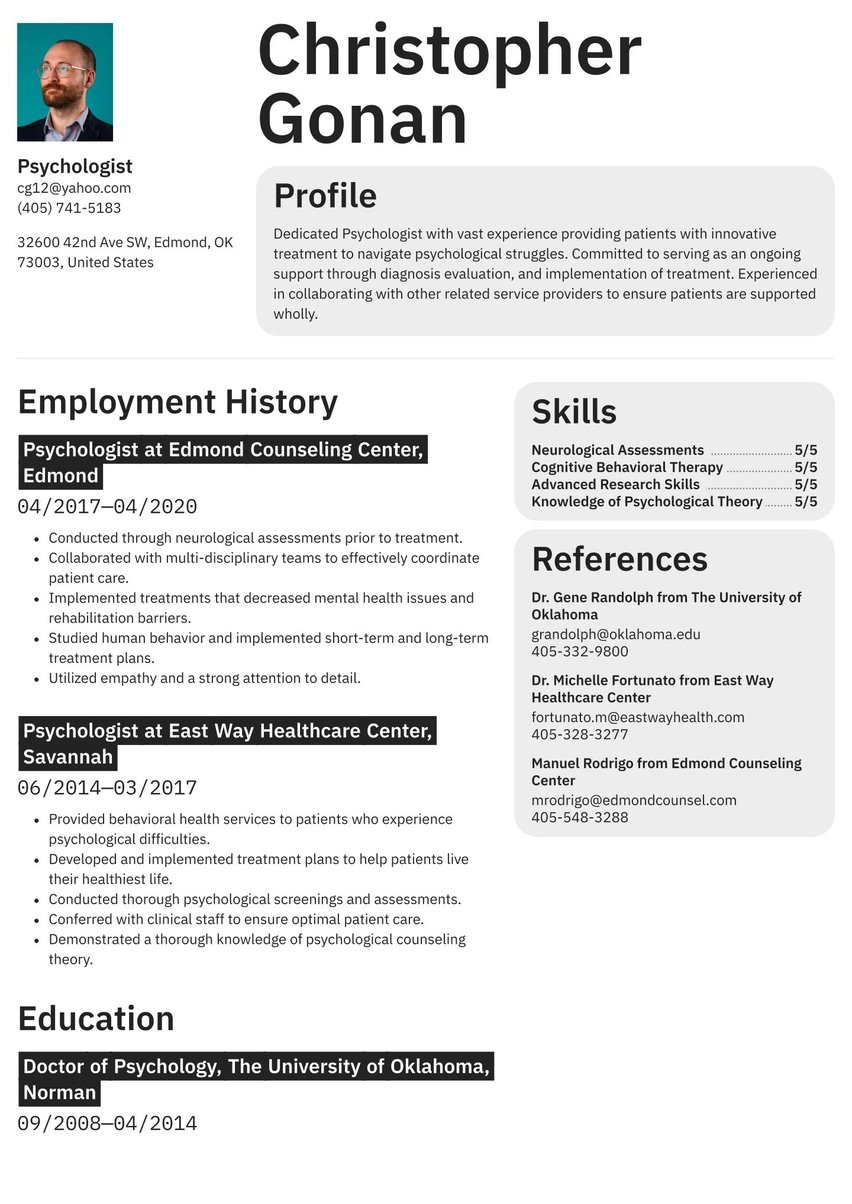Innovative Electrical Engineer with a proven track record of evaluating electrical systems and applying knowledge of electricity and materials in a beneficial way. Adept in carefully diagnosing and assessing issues, while offering real viable solutions. Skilled in design, prototyping, and testing. Committed to working as a collaborative and positive team member, striving to utilize my knowledge and expertise for optimal engineering results.
04/2011 - 08/2019, Electrical Engineer, Central Vico Systems, Los Angeles
- Oversaw and planned electrical specifications for new systems.
- Created and implemented test plans.
- Worked to create improvements that optimized production.
- Accurately diagnosed and directed system issues.
- Managed the diagnosis and repair of electrical circuits and wiring.
03/2008 - 07/2011, Electrical Engineer, Gonan International, San Francisco
- Collaborated with other engineers to ensure safe production processes.
- Performed preventative maintenance and tested equipment.
- Utilized my knowledge of power and distribution systems, circuit calculations, and instrumentation.
- Routinely used tools such as oscilloscopes, function generators, and LCR meters.
- Worked with other engineers to solve problems and enhance processes.
08/2005 - 05/2008, Master of Electrical Engineering, Georgia Institute of Technology, Atlanta
08/2000 - 05/2004, Bachelor of Electrical Engineering , University of Michigan, Ann Arbor
- German
- English
- Strong Critical Thinking Skills
- Circuit Design
- Complex Problem Solving
- Knowledge of Technical Diagrams
- Decision Making Skills
The field of electrical engineering is at a crossroads. While traditionally, electrical engineers have focused on manufacturing and telecommunications, two industries in decline, the Internet of Things (IoT) may create a surge in the demand for your skills. If you have decided to make a move, there is still opportunity out there. You have worked hard so far and now, by developing a strong resume that generates the interest of recruiters and employers, you can position yourself to take the next step in your career. With the market beginning to open up — the Bureau of Labor Statistics predicted only two percent growth in jobs from 2018-28, but has now revised that to a 7% increase through 2030 — prospects are better, but you still need to break out of the pack. Resume.io, its resume builder-tool and expertly-designed layout templates can get you there. First, spend 20 minutes reading this guide to learn how to:
Electrical Engineer resume examples by experience level
- Get past your first hurdle: the Applicant Tracking System
- Create a Master List of skills from which to choose
- Highlight your achievements, successes, and challenges
- Create a career story
- Give a professional first impression with your layout.
Before you start developing your resume, you should have an idea of the market today and how it is likely to change in the future.
How to write an electrical engineering resume
Before you start building a circuit, you need to know what parts you need. The same is true of your production worker resume. Your resume should contain:
- The resume header
- The resume summary (aka profile or personal statement)
- The employment history section
- The resume skills section
- The education section
What does an electrical engineer do?
Electrical engineers design the circuitry for electrical systems, but are also responsible for development, testing, and supervising the manufacture of electrical equipment. They use physics and math to solve problems related to electricity, electromagnetism and electronics. Electrical engineers are a combination of inventor and designer.
The market for electrical engineers
The first fact to remember is that there are more than 313,000 electrical engineering jobs in the United States as of 2020. You only need one. And while manufacturing and telecommunications are experiencing a decline, electrical engineers also work in the following sectors:
- Aerospace: Many systems in an aircraft require electrical circuitry
- Automotive: As vehicles incorporate more electronics, engineers will need to design and test the parts
- Energy: Create and test the parts of electrical plants
- Medical: This includes increasingly sophisticated prosthetic devices
- Naval: In this sector, you will help develop the engines of ships and all the ship’s equipment
- Oil and gas: Engineers in this field design and maintain the electronics in refineries.
The biggest plus, however, may be in IoT. These are devices that can communicate with the Internet without human interaction. This does not include computers or smartphones, but household and other items that you wouldn’t think of as Internet devices. Your smart thermostat is an IoT-type device. The good news for electrical engineers is that these devices are proliferating in many industries and they all need sensors, actuators, and controllers, some of which are electrical. If you are already working on these designs, you are in great shape, but if not, this guide will help you accentuate the skills you need to move forward in your career.
The IoT market is expected to grow more than $2.4 trillion annually by 2027, according to Business Insider.
Also, check out these other related engineering resume examples and get inspired:
- Facilities Engineer resume sample
- Engineering resume sample
- CNC machinist resume sample
- Agricultural Engineer resume sample
- Technician resume sample
- Health and Safety Engineer resume sample
- Research Engineer resume sample
- Process Engineer resume sample
- Project Engineer resume sample
- Structural engineer resume sample
- Mechanical Engineer resume sample
- Civil Engineer resume sample
Resume summary example: spark interest
Your electrical engineer resume is a tightly-controlled accounting of your career. The only place you can loosen up a bit is in your profile, also known as a summary. This paragraph of two to five sentences allows you to describe your professional personality and tell recruiters about your biggest successes. Think about how you will contribute to the company and make it obvious here. You may have a fabulous idea for your profile. If so, go ahead and write it first. Another option is to complete the rest of your resume and then write your profile. This gives you perspective on your overall career progress and may help you write a more impressive summary. The key here is to think about what the specific job is looking for and play to that employer’s distinct wish list. You may write a template that fits many jobs for which you apply but remember to individualize. Generic profiles will not get you that interview. To write a strong profile, you should:
- Decide on one or two career accomplishments to highlight
- Use strong, active verbs to describe those accomplishments
- Express your professional personality with positive descriptors of your attributes
- Take pride in yourself and your achievements without exaggerating.
The IoT market is expected to grow more than $2.4 trillion annually by 2027, according to Business Insider.
Applicant Tracking Systems
One reason it is so important to individualize your resume is the prevalence of Applicant Tracking Systems (ATS) also known as recruiting software. These programs have been a boon to overworked recruiters because they perform an initial sorting and ranking of resumes, eliminating “bad” ones. But what makes a “bad” resume in ATS terms? One that does not achieve a high enough ranking based on its algorithm. While each ATS software uses somewhat different criteria, there are some hacks that will help you get past this gatekeeper and into the hands of a person.
Resume parsing tools may also feature a grammar-based tool for decoding long phrases or sentences or a statistical tool using numerical models to analyze all the text in your resume. That means that while you should use the keywords and phrases, “over-stuffing” your resume with them may do you more harm than good.
Analyze each job description for the most frequently used words and phrases. Then, use those exact keywords and phrases in your resume. It is likely that the ATS software is programmed to scan for them and rank your resume according to how many you include. Also, be aware that in some systems, keywords that equate to higher-level or rare skills are weighted more heavily, so if you have them, use them.
How do you analyze job descriptions?
Sometimes that task can be difficult. If you are struggling to decipher a wordy description or puzzling over a vague one, consider using a word cloud. An application such as wordclouds.com or wordart.com can help clarify. Simply cut and paste the job description into a word cloud creator. The biggest words are the ones that appear most frequently in the text.
Innovative Electrical Engineer with a proven track record of evaluating electrical systems and applying knowledge of electricity and materials in a beneficial way. Adept in carefully diagnosing and assessing issues, while offering real viable solutions. Skilled in design, prototyping, and testing. Committed to working as a collaborative and positive team member, striving to utilize my knowledge and expertise for optimal engineering results.
Resume skills example: plug into your talents
The skills section of your electrical engineer resume should elevate your application by giving recruiters a quick way to see what you offer. This is a deliberate listing not of the skills necessary to get the job done, but the skills that distinguish you from other candidates. Begin by brainstorming a list of all your skills, projects, and achievements. Keep this Master List to add to in the future. Then, divide your list into categories:
- Entry-level: Those skills necessary to get your first job in the industry
- Competency: Skills needed to do the job at a beginning to mid-level
- Expert: Rare skills you have learned through on-the-job experience, certifications, or training seminars.
If you have expert skills, there’s no reason to waste precious space listing your entry-level skills. Another way to categorize is by hard and soft skills. Hard skills are abilities distinct to electrical engineers. Soft skills are those people/social and organizational abilities that allow you to flourish in the workplace.
Here are some examples of the hard skills you need as an electrical engineer, according to George Washington University:
- Mathematics
- Physics
- Circuit design
- Linear systems theory and analysis
- Electrical schematics
- Collect and analyze data
- Prepare operational plans
- Equipment maintenance
Electrical engineers may also need competence in a range of software programs (depending on industry), so make sure to research those, specifically pertaining to your target employer.
Use the exact names of the software programs that you are skilled in instead of listing the general category.
Here are the top soft skills necessary for an electrical engineer, according to Tasker:
- Creativity
- Communication
- Curiosity
- Collaboration
- Leadership
- Problem-solving
- Adaptability
- Organization
- Self-awareness
- Open to feedback
Try not to list these exactly, think about getting more granular or being more descriptive.
- Empathy / Emotional Intelligence
- Meets deadlines
- Clear and concise communicator
- Attentive listener
- Sociable
- Organized
- Communication
- Interpersonal
Use your Master List to cherry-pick the skills most desired in each job description. Choose a mix of hard and soft skills, then show your organizational ability by listing the skills with purpose. You may simply create an alphabetical list or group by category.
In a survey of talent professionals, 92 percent said it is more or equally as important to hire for soft skills as hard skills and that 45 percent of bad hires lack soft skills; another 44 percent lack a combination of soft and hard skills.
- Strong Critical Thinking
- Circuit Design
- Complex Problem Solving
- Knowledge of Technical Diagrams
- Decision-Making
Employment history sample: illuminate your achievements
In this section of your electrical engineer resume, you have the opportunity to detail the projects you have worked on, the professional challenges you have overcome, and your accomplishments in the field. While recruiters will first scan your resume simply to find your job title and the name of the company you work for, when they grant you a more in-depth look, they will want to see a progression of achievements.
How do you do that? Think in terms of projects, not responsibilities. Describe using strong verbs the actions you took to complete a project on time, within budget, and to specification. Explain what problems you faced as an electrical engineer, how you approached solving them, and what outcome you achieved. List the tools you used, whether they be hardware or software, and give as much data and detail as you can as evidence of your accomplishments. Consider incorporating some of these action phrases when you write:
- Evaluated systems and components
- Answered engineering questions
- Tested finished products
- Researched manufacturing methods
- Assured product quality and safety
- Collected data and analyzed for trends
- Designed circuits
Don’t simply use these phrases but add to them to create the big picture of your career as an electrical engineer. Ask yourself these questions as you work:
- What keywords and phrases should I use to help beat the ATS?
- How can I best demonstrate the value I will add to the company?
The average annual salary for electrical engineers in 2019 was $108,250, according to DataUSA. The three areas where workers earned the highest pay were all in California. They were Cupertino, Saratoga and Los Gatos; Oakland and Emeryville; and Mountain View, Palo Alto, and Los Altos.
Electrical Engineer at Central Vico Systems, Los Angeles
April 2011 - August 2019
- Oversaw and planned electrical specifications for new systems.
- Created and implemented test plans.
- Worked to create improvements that optimized production.
- Accurately diagnosed and directed system issues.
- Managed the diagnosis and repair of electrical circuits and wiring.
Electrical Engineer at Gonan International, San Francisco
March 2008 - July 2011
- Collaborated with other engineers to ensure safe production processes.
- Performed preventative maintenance and tested equipment.
- Utilized my knowledge of power and distribution systems, circuit calculations, and instrumentation.
- Routinely used tools such as oscilloscopes, function generators, and LCR meters.
- Worked with other engineers to solve problems and enhance processes.
Education CV sample: the basis for your skills
Most electrical engineers have bachelor’s degrees in the field because of the specificity of knowledge necessary. You may have started your career as an electrical engineer technician or technologist, in which case you should list the certifications you earned to achieve those positions.
Active in professional organizations? Work on projects for yourself? Consider adding a section for Professional Activities and Affiliations or Engineering Projects.
If your GPA is stellar, or you took any classes that are relevant to the job for which you are applying, list those in your electrical engineer CV. As your career progresses, your education becomes less important, so simply listing your schools and degrees in your CV is adequate. If you are beginning your electrical engineering career, especially if you have limited experience, consider listing classes that demonstrate you have learned the skills you need to succeed. Do you take continued education classes or have a certificate beyond your degree? List those here.
Seventy percent of electrical engineers have bachelor’s degrees; 23 percent have earned a Master’s degree, according to O-Net.
Master of Electrical Engineering, Georgia Institute of Technology, Atlanta
August 2005 — May 2008
Bachelor of Electrical Engineering , University of Michigan, Ann Arbor
August 2000 — May 2004
Resume layout and design: seal the deal
Even the ATS has design requirements, so don’t overlook this factor . To make your resume truly great, you must take as much care with the look as you do with your word choice. Before ever meeting you, recruiters will judge your professionalism by the look of your resume. While you may be tempted to attract attention by developing an overly ornate or colorful design, you are much better off starting with one of Resume.io’s design templates. First, look at the Professional category, which may contain templates that suit your needs best, but also consider Modern, Simple, or Creative designs. These templates are customizable, but keep in mind these design rules:
- Legibility is your main goal. Do not use fancy fonts and avoid big blocks of type.
- Place your contact information in a prominent spot. This is one of the first things recruiters look for.
- Don’t overdo the color. A muted palette with a dash of color is fine, but too many bright colors are just a distraction.
- Do not use tables or place important information in headers and footers. Keep the formatting simple so the ATS doesn’t miss any data (for example: Word file headers aren’t “readable” by most ATS systems).
- Surveys show people scan pages in an E or F pattern. Try to keep the most important information in that pattern (top left of the document is where human eyes land by default, and attention wanes as you move towards the bottom right).
- Before you hit send, have a friend or colleague review your document. As an engineer, you understand the importance of precision. Make sure your resume does not contain typos or other mistakes that will have recruiters doubting your attention to detail.
- Keep section headings distinct. Remember that all your data must be easy to access.
- Always send in PDF format. That will eliminate any formatting changes that can occur between programs or different versions of a program.
- Don’t rely on a word processing program, Use a dedicated resume system such as the Resume.io builder tool, specifically created to format correctly.
Key takeaways for an electrical engineer resume
- The Internet of Things has helped the market for electrical engineers rebound from a slump
- Your profile / summary gives recruiters incite into your professional personality and creativity while explaining what value you will bring to the company
- In your skills section, highlight your highest level professional talents and include a mix of hard and soft skills. Here’s a chance to get in some rare keywords
- Use word cloud applications to analyze job descriptions for keywords and phrases to help you get past Applicant Tracking Systems
- Showcase your projects, achievements, and the challenges you have overcome in your employment history
- The first visual impression a recruiter will get of you comes from the design of your resume
Use Resume.io, its tool-builder, and design resume templates to elevate your resume and get the job you desire!


.jpg)

.jpg)




